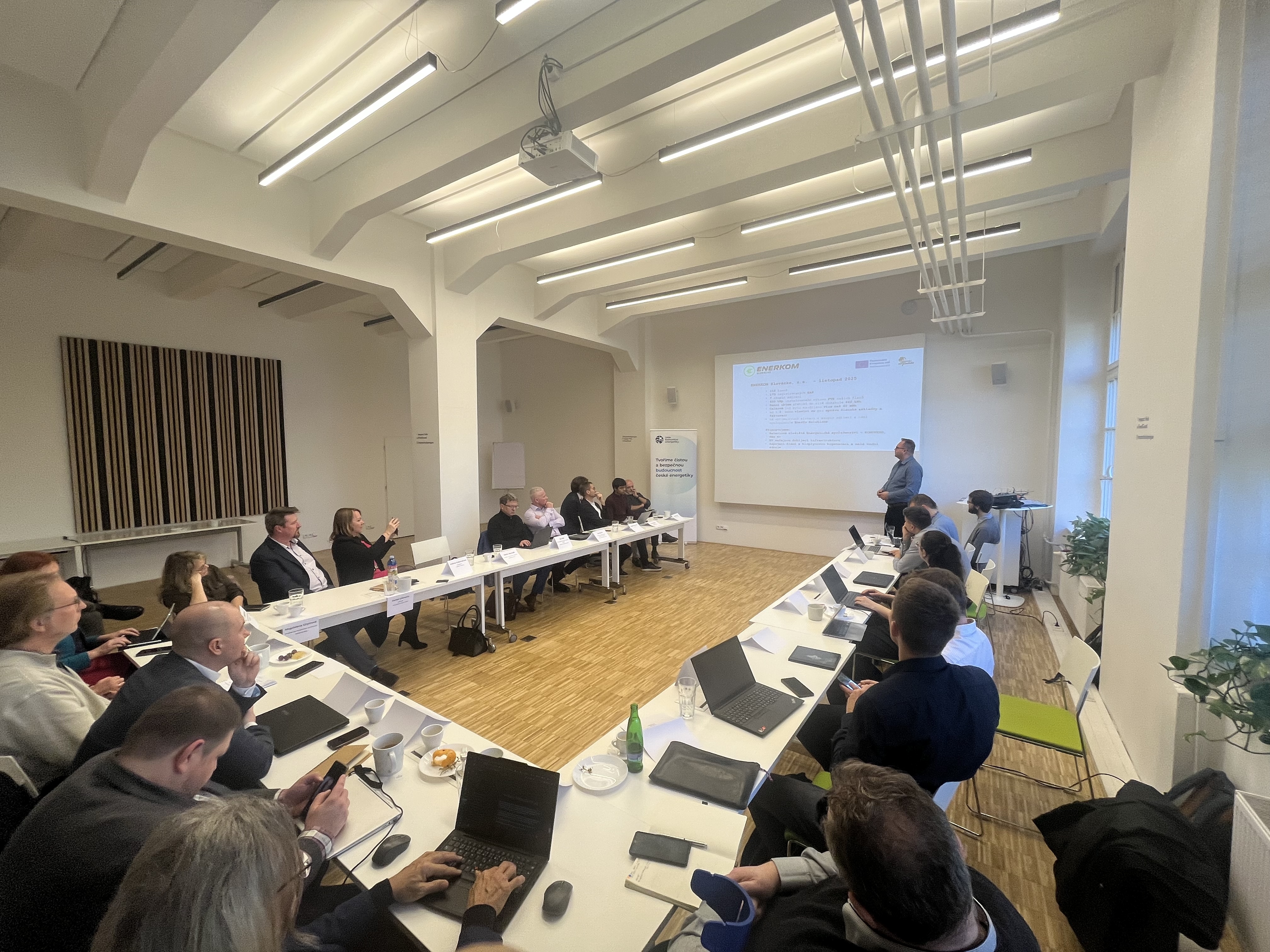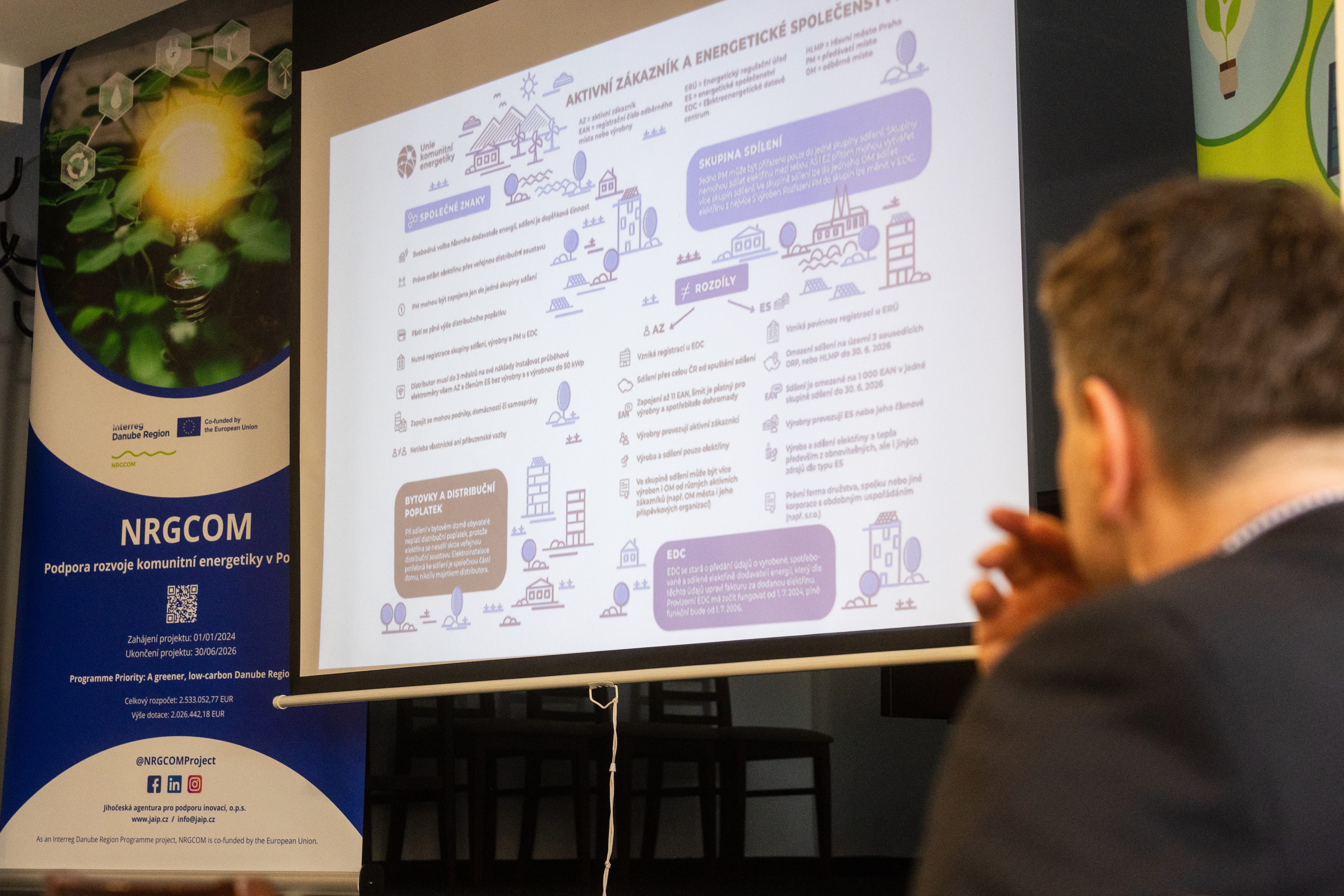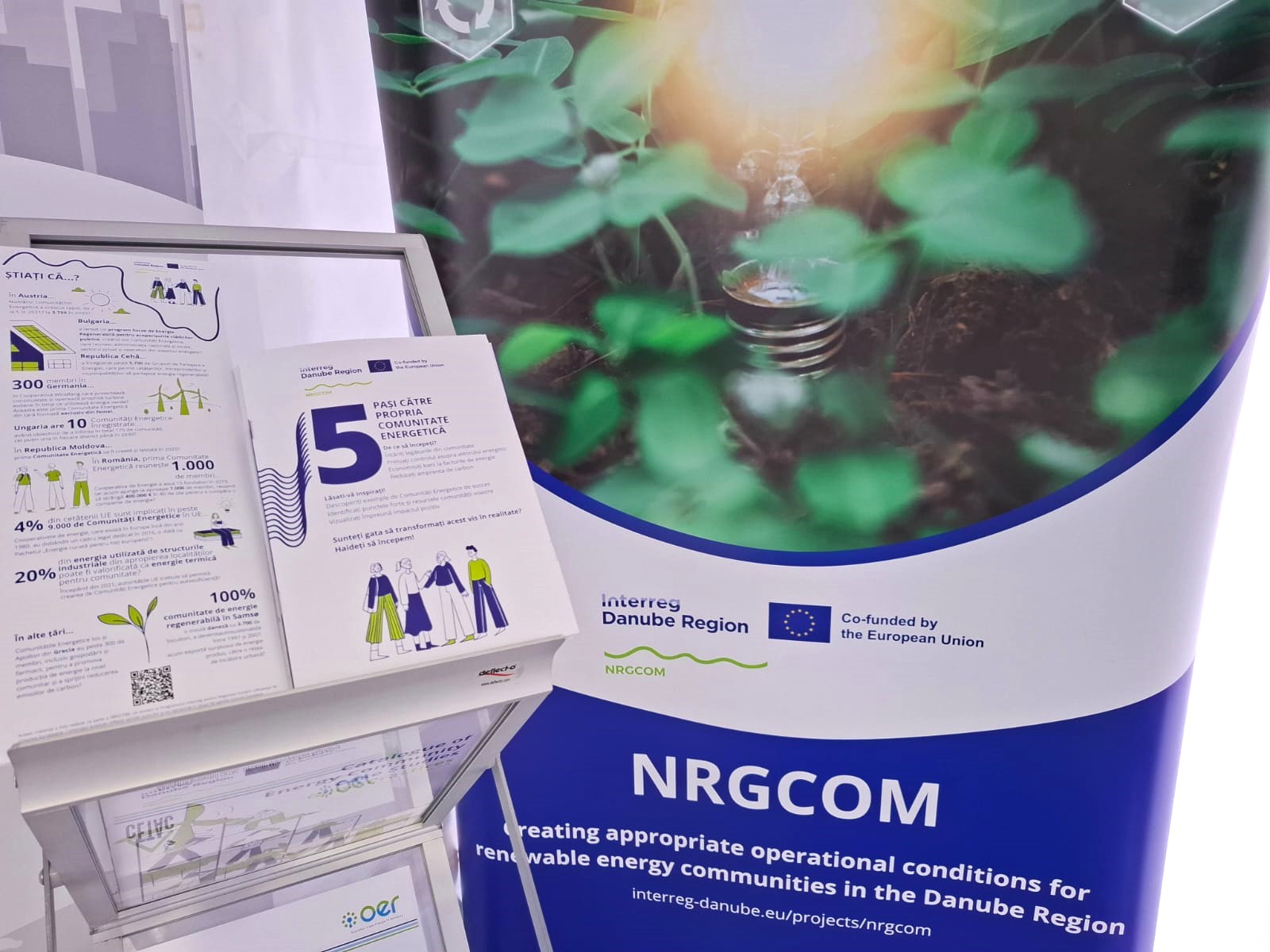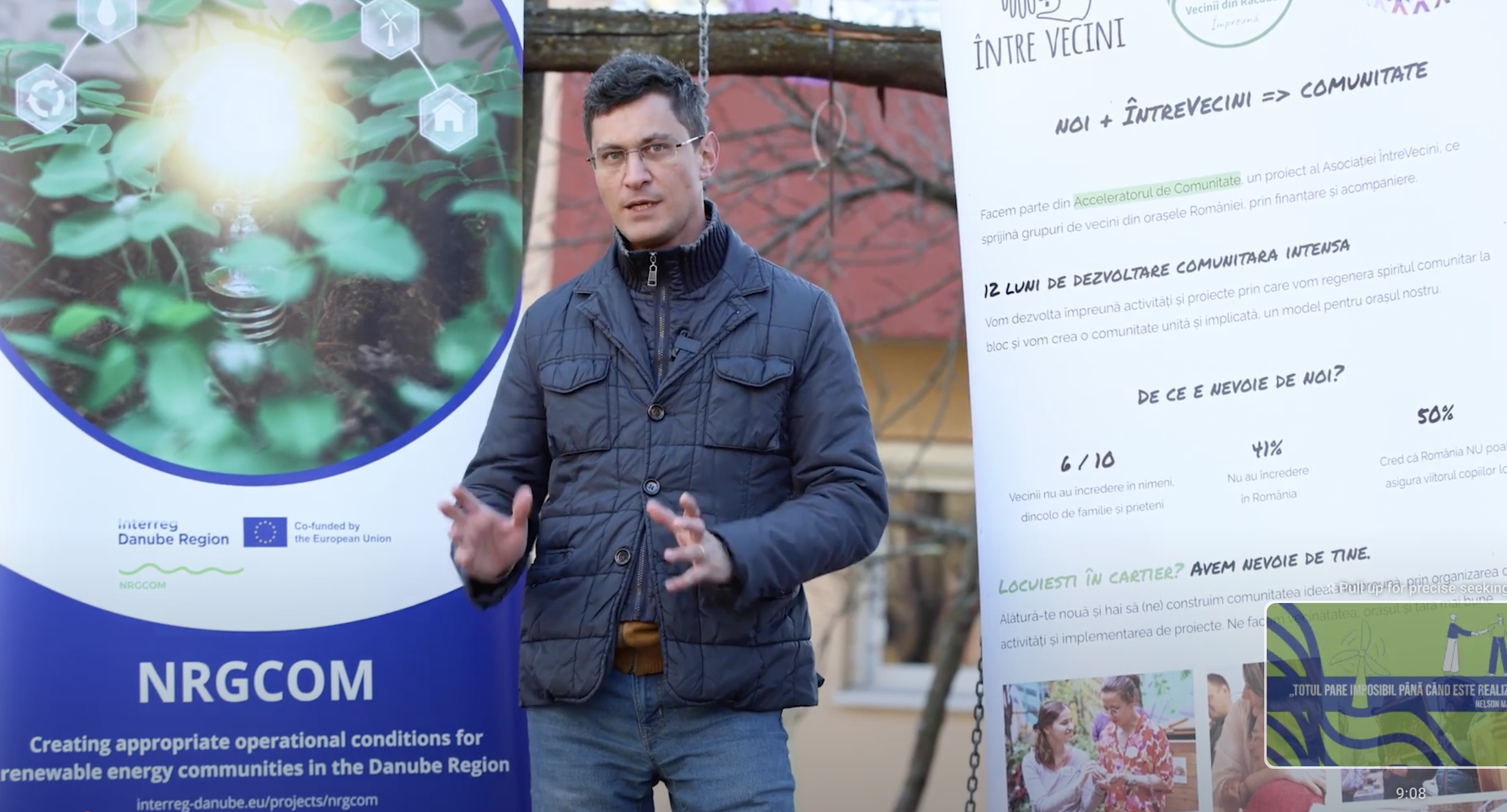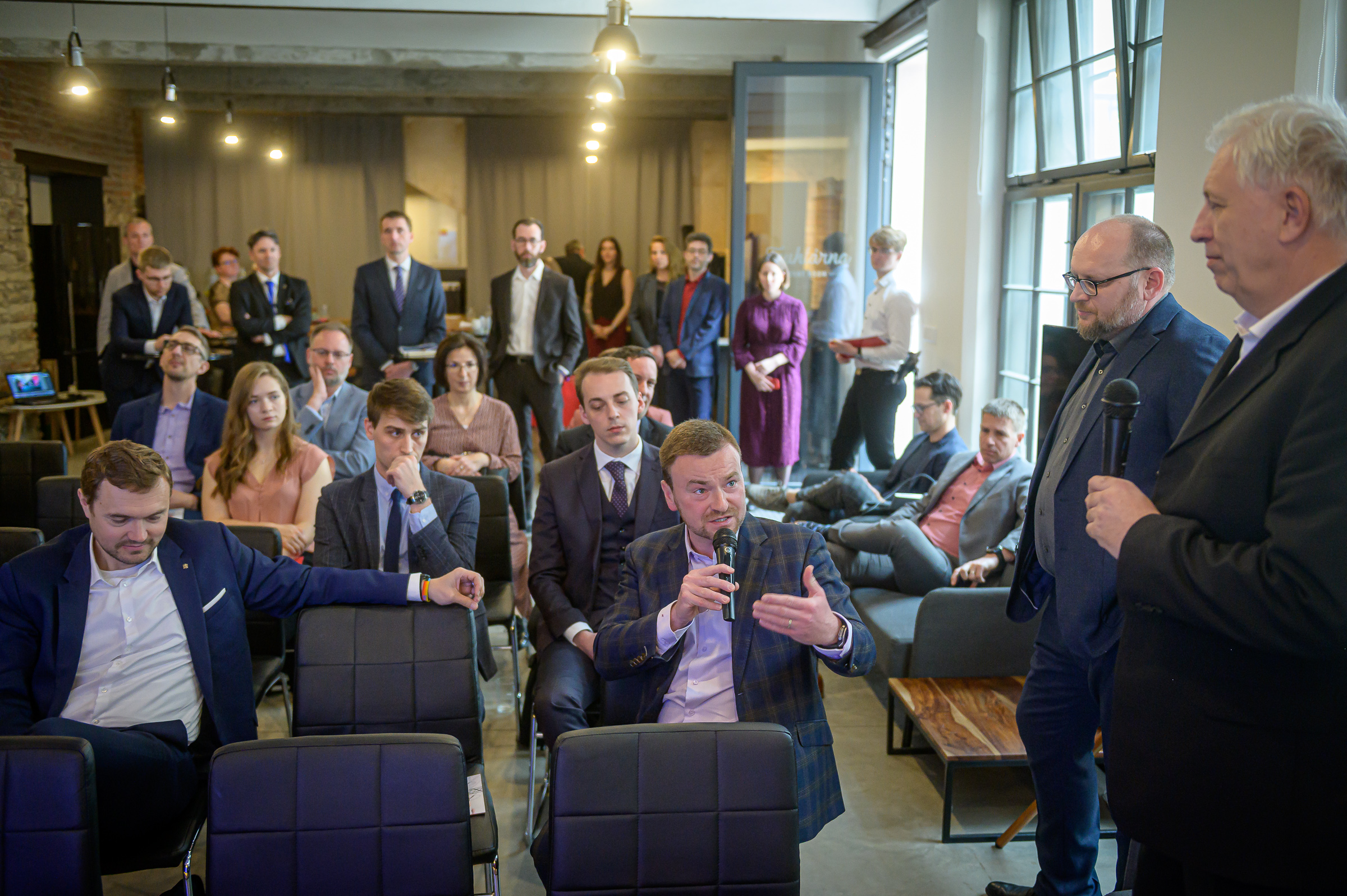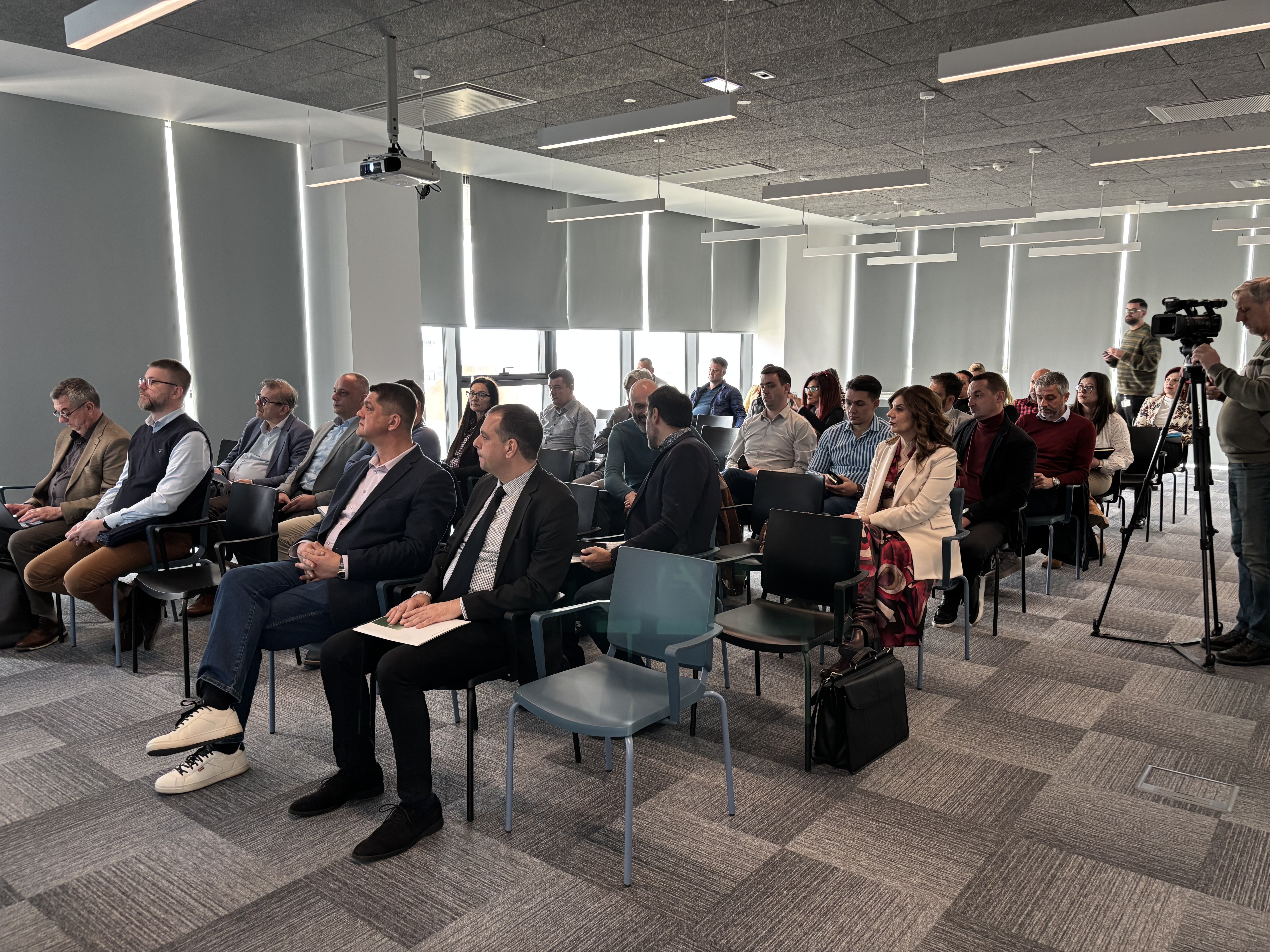
Imagining Energy Communities: students’ perspective from Brașov, Romania
On 18 November 2025, the concept of Energy Communities took another important step forward: it entered the “Solar House” room at the Faculty of Product Design and Environment of Transilvania University of Brașov. The aim of the meeting was to turn a technical, abstract topic into a hands-on experience, rooted in the reality of the city.
With the help of the awareness campaign developed under the NRGCOM project, students found out why Energy Communities can change the way we produce, consume and manage energy at local level and what opportunities they open up for public administrations, businesses and citizens. In this context, the Infographic, the brochure “5 Steps to Your Energy Community”, the Catalogue of good practices from the Danube Region and the Educational Video with concrete examples as part of REC's Awareness Raising Toolkit, all helped clarify the topic and encouraged young people to get actively involved.
A key element in this awareness work is the network of Energy Community Ambassadors: people who believe in the concept and translate it into accessible language for different target groups: authorities, NGOs, homeowners’ associations, young people. One of these Ambassadors, Camelia Sava from Cooperativa de Energie, joined the OER team for the working session with students. Beyond the questions about how citizens can take control over their energy, the meeting also brought a very practical perspective on Energy Communities: how a community that produces and partially manages its own energy is actually set up. Existing models of citizen involvement at EU level were presented: Partago (Belgium), Repowering London, Ecopower (Belgium), along with the types of funding that can be accessed. The first steps needed to launch such initiatives were also discussed.
Starting from this theoretical framework, the discussion then moved into an interactive format. Together with Cooperativa de Energie, we ran a “treasure hunt” exercise, in which students received maps and roles and were invited to look at their city from an energy perspective, identifying potential actors in an Energy Community: producers, consumers and prosumers. The scenarios combined technical and economic aspects (lower bills, better use of existing infrastructure) with the social dimension (citizen engagement, the role of education, a positive image for authorities and investors). The interventions of Camelia Sava from Cooperativa de Energie grounded these ideas in concrete examples from her experience working with communities interested in renewable energy.
The promoters and ambassadors of community energy are the ones who connect concepts to real life, who bridge the gap between strategies written on paper and the people who, one day, will actually start an Energy Community in their own city.
For us, this activity in the university environment is a confirmation that the next generation is ready to think beyond the limits of the traditional energy model.
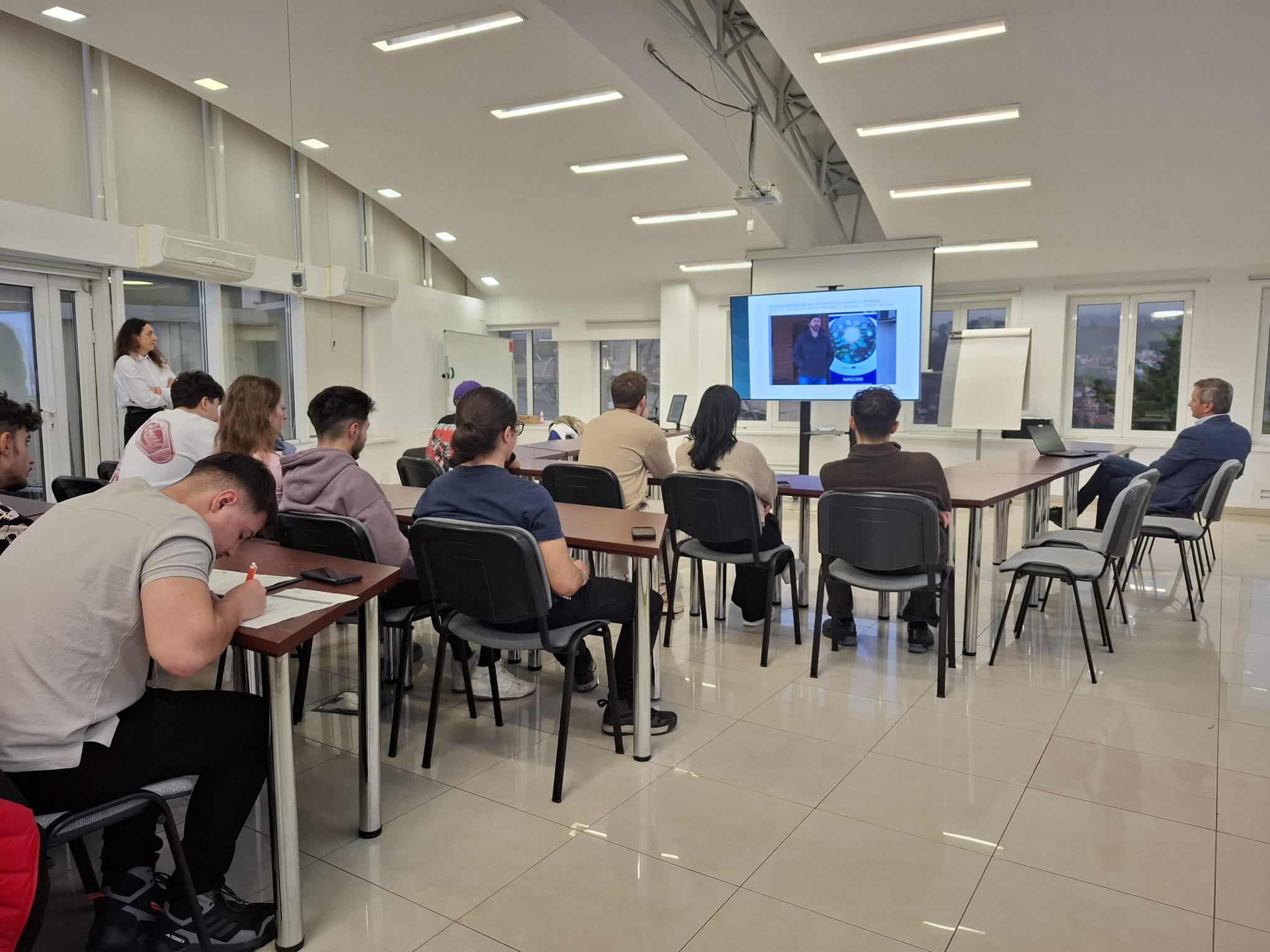
News & Events
Read the most recent updates and explore the upcoming events.

